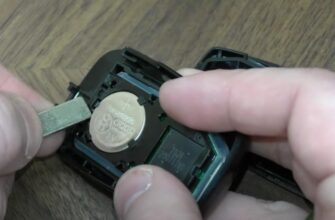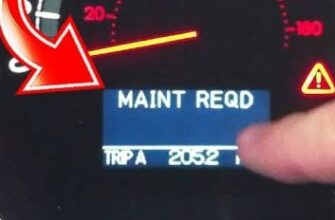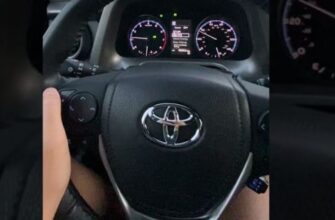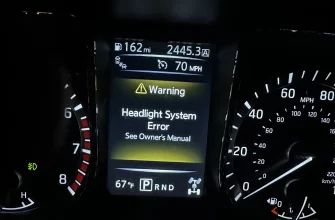You’re cruising along in your Toyota, maybe on a long drive, or perhaps just navigating some winding roads, when a message pops up on your dashboard or infotainment screen: “Would you like to take a break?” Sometimes it’s accompanied by a coffee cup icon or an audible chime. It sounds polite enough, but if you’re feeling perfectly alert, this can be a confusing and even annoying interruption.
This message is part of your Toyota’s safety systems, specifically designed to detect potential driver fatigue and encourage you to take a rest. While well-intentioned, it doesn’t always get it right, and many drivers want to know how to turn it off or adjust its sensitivity.
Let’s look at what triggers this “take a break” suggestion in your Toyota and guide you through the steps to disable it if it’s not needed.

What “Would You Like To Take a Break?” Means in Your Toyota
This message is typically generated by the vehicle’s Driver Attention Alert, Sway Warning, or Fatigue Detection Warning system, which is part of the broader Toyota Safety Sense (TSS) suite on many modern Toyotas.
Designed to Detect Fatigue
The system monitors your driving behavior to look for signs that you might be getting drowsy or losing focus. Common triggers include:
- Lane Swaying: The system primarily watches your vehicle’s position within its lane. If it detects repeated or excessive swaying back and forth, especially without using a turn signal, it interprets this as a sign of potential drowsiness or inattentiveness.
- Driving Duration: On some Toyota models, the message may also appear after a certain amount of continuous driving time, regardless of driving style, simply as a proactive reminder on long trips.
The system uses cameras (like those for Lane Departure Alert or Lane Trace Assist) and sensors to monitor lane markings and your vehicle’s movements.
“My Corolla started giving me the coffee cup message on mountain roads even though I wasn’t tired. It just thinks swerving on windy roads is like being drunk or something.” – A user finding the system overly sensitive
This highlights how the system, primarily focused on detecting highway-style lane deviations, can sometimes trigger under normal driving conditions like navigating curves.

Why It Might Trigger Even When You’re Not Tired
As the quote above suggests, the system isn’t perfect at reading your mind or actual fatigue level. It relies on specific behavioral patterns.
- Winding Roads: Driving on twisty roads can sometimes be interpreted as “swaying” by the system, even when you are driving attentively.
- Poor Lane Markings: Faded, unclear, or inconsistent lane lines can confuse the camera system, leading to false alerts.
- Brief Inattentiveness: Even a few moments of drifting or slight overcorrection could be enough to trigger the warning if it happens repeatedly within a short timeframe.
How To Turn Off or Adjust the “Take a Break” Message
Since this alert is part of the vehicle’s safety features, the ability to completely turn it off and the exact steps to do so can vary depending on your specific Toyota model and model year, as well as the version of Toyota Safety Sense it’s equipped with.
Consult Your Owner’s Manual: The most accurate instructions for your specific vehicle will always be in your Owner’s Manual under sections related to Toyota Safety Sense, Driver Assistance, Lane Departure Alert, or Customizable Settings.
However, here are the common ways to manage this alert:
Method 1: Temporarily Dismissing the Message
Often, the easiest way to get rid of the message for the current drive is to simply acknowledge and dismiss it.
- Press the “Back” or Arrow Button: Many Toyota models allow you to clear the message from the display by pressing the “back” button (often a curved arrow icon) or an arrow button on your steering wheel controls, typically located on the left side. The message will disappear, but it might reappear later if the system detects further signs of fatigue.
“I just hit the return arrow button on the steering wheel whenever the coffee cup pops up. It gets rid of it right away.” – Another user sharing a simple dismissal method

Method 2: Adjusting Settings via the Multi-Information Display
For a more permanent solution (or to adjust sensitivity), you’ll typically need to dig into your vehicle’s customizable settings menus using the controls on your steering wheel and the display screen in your instrument cluster (the screen behind the steering wheel, not the central touchscreen).
- Access Vehicle Settings: Use the arrow buttons on your steering wheel to navigate through the menus on your instrument cluster display until you find the Settings menu (often looks like a gear icon or says “Settings”).
- Find Driver Assistance/Vehicle Settings: Scroll down within the Settings menu to find “Vehicle Settings” or “Driving Assistance” and select it.
- Locate Fatigue/Sway/Driver Monitor Settings: Look for options related to driver attention, fatigue, or sway. The exact wording varies but might include:
- “Fatigue detection warn.”
- “Sway Warning”
- “Driver Monitor Alert” (especially on newer models with a driver-facing camera)
- “Break Suggest”
- Turn Off or Adjust: Select the relevant setting. You may have the option to turn the alert OFF completely or adjust its Sensitivity (e.g., to a lower setting so it triggers less easily).
- Confirm: Follow any on-screen prompts to confirm your selection.
If your vehicle has a Driver Monitor Camera (a small camera often located on the steering column), the break suggestion might be tied to its monitoring. You might find related settings under “Driver Monitor Settings” to turn off associated alerts.
Method 3: Checking Lane Departure Alert Settings
Since the break suggestion is often linked to detecting lane sway, adjusting the primary Lane Departure Alert (LDA) settings might sometimes influence when the break message appears. Look for the LDA settings within the Driving Assistance or Vehicle Settings menu and explore options for sensitivity or the sway warning specifically. On some models, there might even be a physical button on the dashboard or steering wheel to toggle LDA on/off.
Importance of Your Owner’s Manual
Because these systems and their settings menus differ, always refer to your specific Toyota model and year’s Owner’s Manual. It will provide the precise menu paths and options available in your vehicle. You can often find digital versions of Toyota owner’s manuals online.
“Couldn’t figure out how to turn off the coffee cup in my RAV4. Dug through the settings menu with the steering wheel buttons and finally found ‘Sway Warning’ under Vehicle Settings. Turned it off, and no more nagging!” – A RAV4 Owner
Related Toyota & Safety Feature Guides
Understanding all the alerts and assistance features in your Toyota can be helpful. Check out these related guides:
- If you’re getting other beeping noises, our comprehensive guide Why Is My Toyota Beeping While Driving? might help you identify the source.
- Modern vehicles have many complex driver-assist systems. Learning about specific issues in these systems, like Adaptive Cruise Control Issues, can provide broader context on how these technologies work and are managed.
Frequently Asked Questions (FAQ)
Q: Does the “Would you like to take a break?” message mean there is something wrong with my Toyota?
A: No, this message does not typically mean there is a malfunction with your vehicle. It’s a function of the safety system designed to suggest you take a break based on detected driving behavior (like swaying) or driving duration.
Q: Can I just ignore the message?
A: Yes, you can usually dismiss the message by pressing a button on your steering wheel (like the back arrow). The message will disappear from the display, but it may reappear later if the system continues to detect triggering behavior.
Q: Is it possible to turn off the break suggestion permanently?
A: On most modern Toyota models, yes, you can disable or adjust the sensitivity of the fatigue or sway warning feature through the vehicle’s customizable settings menus using the steering wheel controls and the multi-information display. The exact option name varies.
Q: What triggers the “take a break” message most often?
A: The most common trigger is the system detecting what it interprets as “swaying” within your lane, often due to slight deviations over time, especially if you are not using your turn signal when nearing lane lines. Long continuous driving periods can also trigger it on some models.
Q: Is this message part of Toyota Safety Sense?
A: Yes, the driver attention or sway warning feature that prompts you to take a break is typically integrated into the Toyota Safety Sense (TSS) suite of active safety technologies.
Conclusion
The “Would you like to take a break?” message in your Toyota is a safety reminder from the vehicle’s fatigue or sway warning system. While its intention is to promote safe driving, it can sometimes be intrusive if it triggers unnecessarily. By understanding that it’s usually based on detecting lane sway or driving time, you can better interpret why it appears. You can manage this alert by simply dismissing it for the current drive or, for a more lasting solution, navigating your vehicle’s settings menus using the steering wheel controls to disable or adjust the specific warning feature. Consult your Owner’s Manual for the precise steps for your Toyota model and year to take control of this reminder!








